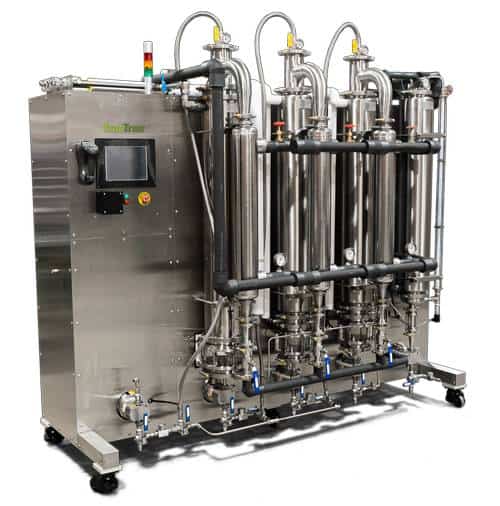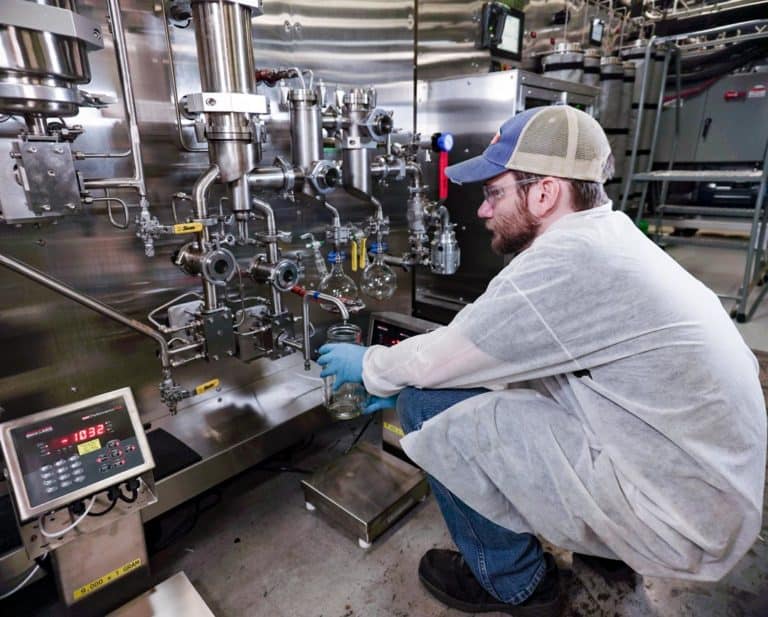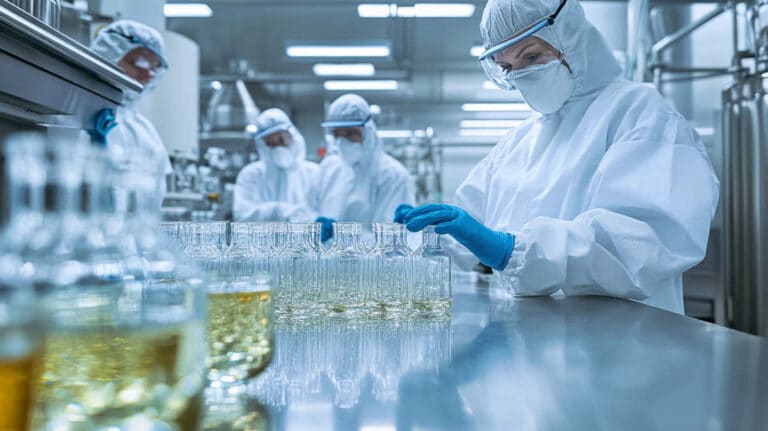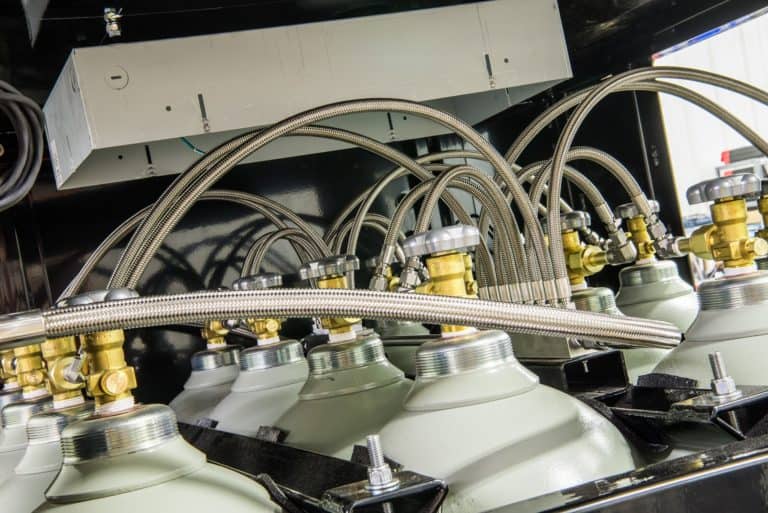Distillation: Your Guide to Equipment and Techniques
Venturing into the distillation industry requires a substantial understanding of the necessary equipment and techniques involved. This post will provide a comprehensive guide to distillation, starting with fractional distillation, an essential procedure which utilizes intricate brass works for optimal results.
We’ll then explore steam distillation, a unique method used predominantly in certain industries, and finally we’ll discuss vacuum distillation and its role within this field. In order to gain a thorough comprehension of these vital procedures, it is imperative to understand the basics of the distillation process. Upon completion of this guide, readers will have acquired an in-depth knowledge of the various distillation techniques.
Distilling the Basics: A Quick Guide
Distillation is a powerful tool for chemistry professionals, allowing them to produce clean, pure substances with incredible precision. It involves two key pieces of equipment: a reboiler and a condenser.
Reboilers: Heating Things Up
A reboiler is a device used in distillation processes that helps to produce and condense vapors. It serves an integral role by continually heating up a liquid (typically water or oil) until it is hot enough to boil and produce vapor. This vapor can then be collected and cooled in order to extract the desired product. There are three types of reboilers: single-phase, two-phase, and thermocompression.
- Single-phase reboilers use only one liquid phase in the system;
- Two-phase systems utilize both boiling and condensation
- Thermocompression works by increasing the pressure of the system above atmospheric levels to raise the boiling point of the liquid above its normal temperature.
All three have their specific uses depending on the needs of the particular distillation setup, making them invaluable components in many industries, such as food processing, petrochemical refining, and pharmaceutical production.
Condensers: Cooling Things Down
The second key component of a distillation system is the condenser. Its purpose is to cool down the vapor produced by the reboiler, thereby causing it to revert back into its liquid state. Condensers come in three distinct types.
- Shell-and-tube condensers have a large metal tube filled with coiled copper tubing, within which the vapors are cooled by a coolant that passes through them.
- Plate condensers consist of multiple flat plates stacked on top of one another, separated by gaskets and held together with clamps. In these condensers, the vapor is cooled as it passes through narrow channels between each plate
- Coil condensers feature coils of tubing containing refrigerants that are cooled by an external source, such as air or a cooling liquid. Each type of condenser has unique benefits and drawbacks depending on the purpose for which it is being used and should be selected accordingly.
Reboilers and condensers work together to separate components based on distinct differences in boiling point from one another. This cycle of heating, evaporating, cooling, and collecting repeats until desired product purity levels are achieved. With this method, chemists can achieve the highest possible level of component separation, delivering pure products with precision and accuracy.
A well-executed distillation is a precise process that requires careful monitoring and control, ensuring that the mixture stays within the correct temperature range for optimum product purity. The end result is a high quality product that meets the desired standards. Distillation is a powerful tool for chemistry professionals, allowing them to produce clean, pure substances with incredible precision.
Fractional Distillation
Fractional distillation is an essential technique for anyone exploring the world of botanical extraction. This process involves separating and purifying individual components from a mixture by taking advantage of their distinct boiling points.

The core principle behind fractional distillation relies on the fact that different substances boil at different temperatures; therefore, by gradually increasing the temperature applied to a mixture, it is possible to selectively vaporize each component one by one, beginning with those that have lower boiling points. A variety of equipment is used in this process, such as fractional columns which facilitate efficient condensation and recovery of constituent parts.
This method yields more efficient results compared to other types of distillation due to its ability to separate components based on boiling point differences and not just density or volatility. By taking advantage of its unique properties, fractional distillation allows you to gain greater control over how you extract and purify botanical materials for various applications.
How Does Fractional Distillation Work?
The process begins by heating the mixture in a still or boiler; this increases the temperature until the individual components reach their respective boiling points and vaporize. The vaporized materials are then guided into a fractionating column where they cool down again and condense back into liquid form. As they re-condense within the column, each component collects and separates from other components; these collections are referred to as “fractions” or “cuts”.
By analyzing these fractions according to their chemical composition, it is possible to identify and isolate desired compounds for further processing. Fractional distillation has become an indispensable tool for many industries due to its ability to produce highly concentrated, pure products with minimal effort or waste.
The Role Of Fractionating Column
A fractionating column is a critical piece of equipment for anyone performing efficient fractional distillations. This device functions by allowing vapors to rise through it and be re-condensed multiple times, creating what are referred to as theoretical plates or equilibrium stages.
Fractionating columns are designed using a variety of diameters, heights and lengths that can affect the number of theoretical plates created, thus impacting the overall efficiency of the distillation process. The number of theoretical plates depends on the vapor pressure differential between the column top and bottom along with the temperature gradient within the column itself.
Glass Beads And Packing Material In Columns
To enhance efficiency further still (pun intended), many columns come packed with glass beads or other packing materials such as ceramic rings or metal mesh screens. These increase surface area inside your column, allowing more opportunities for vapors to cool down and revert back into liquids before reaching the topmost section, where they are collected separately according to their respective boiling points. By combining these variables, one can achieve highly efficient fractional distillations that facilitate in separating desired compounds from mixtures.
Steam Distillation
Steam distillation is a widely used method for extracting and separating compounds from botanical materials. The process involves passing steam through the material being distilled, causing it to vaporize and separate into its component parts which are then collected separately.
The Basics of Steam Distillation
In this technique, water is heated to produce steam that passes over the plant material. The heat from the steam causes the plant’s cell walls to break down and release their volatile oils. These oils evaporate with the steam, creating a mixture of oil vapor and steam.
This combination then moves into a condenser, where it cools down and returns back to liquid form – now as an aqueous layer (water) and an organic layer (essential oil). This separation allows us easy collection of our desired product: essential oils or other extracted substances.
Advantages of Steam Distillation
- Purity: One significant advantage of using steam distillation in your extraction process is purity. Since only the steam will carry only volatile components, non-volatile impurities remain behind in the original container.
- Safety: It’s also considered safer than other methods because it doesn’t require high pressures or temperatures, which can pose risks if not properly managed.
- Eco-friendly: Moreover, since water is used as a solvent instead of chemicals like hexane or ethanol, it’s more environmentally friendly too.
Vacuum Distillation
Vacuum distillation is a process that reduces the pressure inside the still, resulting in lower boiling points and higher purity products. By decreasing the pressure, liquids can vaporize at much lower temperatures than under normal atmospheric conditions.
The Process Explained
To perform vacuum distillation, place your material into a distiller and reduce the pressure with a pump to create a vacuum-like environment. Apply heat to make your material boil and evaporate at low temperatures.
The vapor produced travels through a condenser, cooling it down into liquid form, free from impurities or unwanted elements present in its original state. This purified product collects separately for use or further processing.
Benefits of Vacuum Distillation
- Purity: Vacuum distillation produces highly pure extracts by effectively separating components based on different boiling points.
- Safety: This method operates at relatively low temperatures, reducing the risk of thermal degradation or combustion.
- Eco-friendly: It’s an environmentally friendly process that minimizes waste by maximizing yield.
Elevate Your Distillation Process: ClearSTILL 400 Wiped Film Evaporator
The clearSTILL 400 Wiped Film Evaporator by extraktLAB is the latest innovation in distillation technology. This cutting-edge system utilizes thin film technology to enhance distillation efficiency, reduce processing time, and save energy.
Featuring precise temperature control and consistent results across a wide range of materials, businesses can achieve their desired outcome with ease. What’s more, extraktLAB has developed an automated extraction-to-distillation system that eliminates winterization and can even cut labor costs in half.
With its comprehensive range of equipment and services, extraktLAB provides businesses with the tools necessary for success in the dynamic extraction industry. Whether you’re looking for personalized assistance or advanced solutions, you can contact 651.600.0036 or complete the form to begin your journey towards an elevated distillation process today!
Selecting the Right Equipment For Your Needs
Picking out suitable distillation equipment largely depends on what kind(s) of mixtures you plan on processing along with the scale at which operations will be conducted, i.e., whether industrial-sized batches are involved versus smaller laboratory-scale experiments. Always remember, though: quality should never be compromised over cost savings when dealing with matters pertaining to the safety and health of both workers and consumers alike.
When investing in distillation equipment, consider the following factors:
- Durability: Ensure that your chosen equipment has robust construction capable of withstanding intense processes involved during operation.
- Maintenance: Opt for devices designed with easy maintenance features like detachable parts or self-cleaning mechanisms.
- Certification: Check if they comply with safety standards set by relevant authorities such as ISO (International Organization for Standardization).
- After Sales Service: Consider manufacturers who offer excellent customer service, including technical support.
These considerations will help ensure you get value from your investment while also guaranteeing smooth operations.
Conclusion
Distillation is a complex but essential process for various applications ranging from laboratory work to industrial production. There are three main types of distillation – fractional distillation, steam distillation, and vacuum distillation – with each having its own advantages and disadvantages in terms of cost, effectiveness, and safety.
An understanding of the basics of distillation as well as the differences between each type will help you identify the best equipment for your particular application and ensure that you get the most out of your investment. By taking the time to consider all these factors before making your selection, you can be confident that your chosen equipment will meet your needs and provide satisfactory performance for years to come.
Contact Us To Get Started Today







